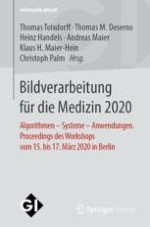2020 | Book
Bildverarbeitung für die Medizin 2020
Algorithmen – Systeme – Anwendungen. Proceedings des Workshops vom 15. bis 17. März 2020 in Berlin
Editors: Prof. Dr. Thomas Tolxdorff, Prof. Dr. Thomas M. Deserno, Prof. Dr. Heinz Handels, Prof. Dr. Andreas Maier, Dr. Klaus H. Maier-Hein, Prof. Dr. Christoph Palm
Publisher: Springer Fachmedien Wiesbaden
Book Series : Informatik aktuell
